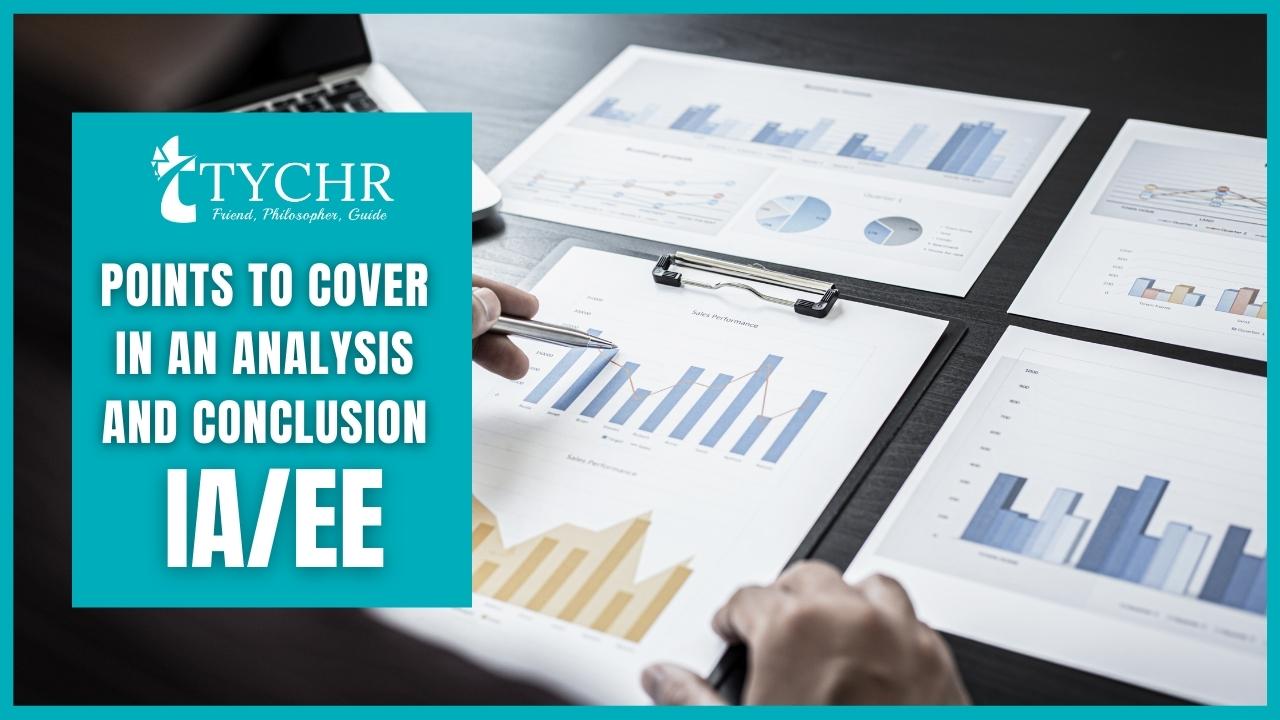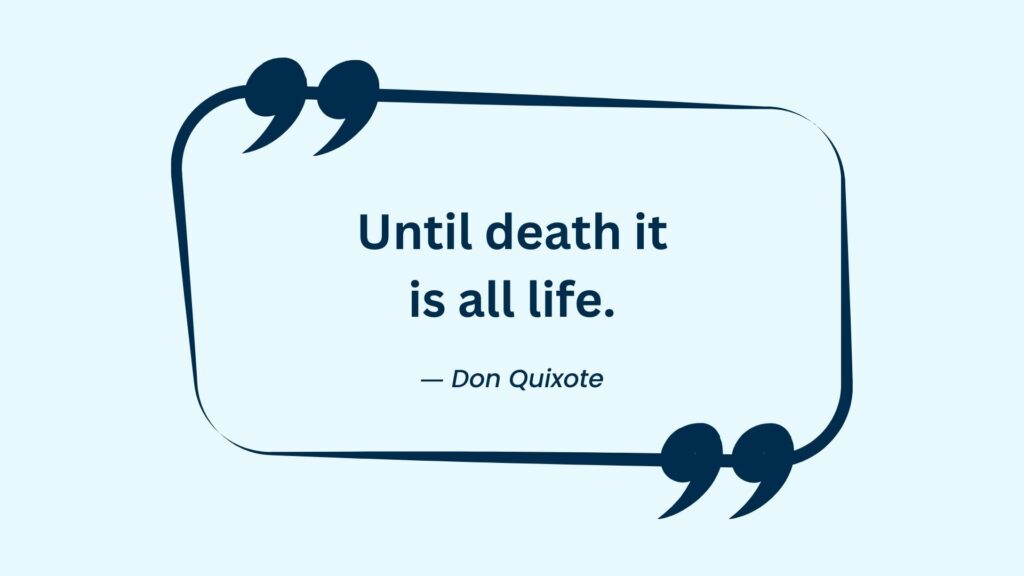Table of Contents
- 1 How do you write an analysis?
- 2 How do you write an effective IA/EE conclusion?
- 3 What do you avoid writing in an IA/EE conclusion?
- 4 Frequently Asked Questions (FAQs)
- 4.1 Q1: What is the analysis section of the EE?
- 4.2 Q2: What are some key points to cover in the analysis section of the EE?
- 4.3 Q3: What is the conclusion section of the EE?
- 4.4 Q4: What are some key points to cover in the conclusion section of the EE?
- 4.5 Q5: How can I ensure that my analysis and conclusion are well-written and effective?
Understanding how to write an analysis is of importance since it covers a major part of your IA/EE. This portion of the IA/EE includes your findings and your research unlike sections like background information where you just source the information online. One step further is writing the conclusion.
This is basically the ‘summary of the analysis’. This portion is also just as important as it leaves an impression on your reader; it’s known as the introduction at the beginning. Some people just tend to dive into the end of the paper and read the conclusion to understand what the entire process was right from the introduction section.
Writing your conclusion is one shot that you get having a final say in the extended essay. The conclusion does not limit you to how you want to write it. It allows you to explore boundaries, make new connections, and elaborate on the importance of your findings. At the end of reading the conclusion, your reader should have personally inflicted on the aforementioned research as well as your findings and results.
How do you write an analysis?
This section of the IA/EE shows how well you can interpret the data that has been collected, processed in ways that are relevant to the research question and can support a conclusion.
Here are some of the steps I followed to write the analysis:
Collecting the raw data
- These are outcomes of the experimental procedure. This can also be in the form of qualitative observation because the reader does not exactly know how the experiment had happened. Therefore, always writing a qualitative observation, gives the reader a personal insight to your document.
Processing the data
- You may need to calculate all the calculations of the raw data of the independent variables. Data processing involves finding the value of the dependent variable if required. While making the calculations, you will always need to include a sample calculation with its exhaustive steps and perhaps include screenshots from Excel if it was done there.
Graphing your processed data
- Try to include one graph at the minimum to explain your findings, as when compared to words, people tend to relate and understand better with visuals. Thus, seeing a trend with the appropriate axes labels will tell the reader that this is the outcome and relate it to what is written in the analysis itself.
- Try to avoid including more than 4 graphs as this would become too monotonous, thus leading to the reader to lose focus and skip through it.
Something that I had done was that since I had two independent variables but the same outcome (1 dependent variable), I managed to include all three variables in one graph. This gave me two y axes and one x-axis. Therefore, I then sophistically fit it all in one graph, hence avoiding multiple graphs.
Interpretation of processed data
- This is the paragraph which is the actual analysis part of your findings in your research. You will be including the pattern that is seen in the graph with relation to the RQ stated. Entailing specific numerical reference to tables will boost your analysis since you would be providing a very thorough explanation.
- The maximum/minimum data points and the general trend, including a possible scientific explanation for both.
- Any abnormal data points in the trend and a possible explanation for it
- Error bars to account for the possible factors that could have caused uncertainty at any point.
- R^2 value to talk about the strength of your proportionality between both the independent and dependent variable.
- Lastly, you would need to briefly state if you agree/disagree with your hypothesis.
As we have the basis of what needs to be an Analysis, we will now comprehend how the conclusion works. In my words, I’d call it an extension from the analysis with secondary data.
How do you write an effective IA/EE conclusion?
To write a conclusion, I questioned every single statement I wrote. The beginning of the conclusion will just be a summary of the analysis and further moving on, you will be providing answers to any possible questions that arise upon reading the final statement. Questions that really tend to help the thinking process of what needs to be included are shown below:
- So what
- What for
- Why is it so
These questions usually fill in the blanks for the reason behind why everything is done the way it is done. Therefore, write a brief summary including all of your results and show how the points and examples you made are relevant to the RQ and how it in turn circles back to the introduction. Adding on, apart from answering the ‘what’ questions, another bonus tip would be to include and connect the theme from the introduction in the conclusion.
It will make your IA/EE more whole and complete, thus completing a full circle. This can be done by stating the same situation as you did in the introduction and proving their statements with newer understanding, consequently showing that your research was useful and informative. Furthermore, including the hypothesis and explaining to what extent it is right or wrong also gives a direct connection to the beginning of the document.
Lastly, something that I included was one final statement that directly answered the RQ. This is a more crisp format of what would be written in the entire conclusion. Again, this is for the reader to immediately see the final outcome of this research, instead of having to read through the entire conclusion.
What do you avoid writing in an IA/EE conclusion?
Refrain from stating the thesis or your bigger purpose of why you’re doing this experiment for the first time, in the conclusion. This includes new ideas and new concepts that you have not mentioned before anywhere else. Doing this would showcase a level of un-organization since your outline and the pointers were not laid out before you had begun writing the IA/EE. Including your own opinions to conclude or stating that emotional appeals have in some way affected your paper is always not entertained or read through since the entire paper is analytical.
Backing up your answers with emotional opinions will not support the statements, thus showing us that you will need hard proof. Also keep in mind that the readers are not bothered about ‘mysteries’. Having said that, always include everything in the introduction across the entire document and always lead it and connect it back to the introduction.
For me, in the beginning stage of writing the conclusion, I had kept writing on and on, not bothered about how I had written something that was not even grammatically correct. But once you lay out a draft conclusion, you will be working on it for a minimum of 5 times, since it may change according to your results. At least that’s what I did. Some statements that I had used to begin my conclusion:
- All in all
- Lastly
- In conclusion
- Overall
An example:
Beginning of the conclusion:
“As explained in the background information, lower g’s provide a safer condition. The data collected using an experimental model to simulate a rollercoaster (stating what you did in the experiment) indicated that the….(your results and finding)
Here, as you can see, firstly I have stated a brief statement of what I’m trying to do in my research and also connected it to the background information. The next line is about how I experimented and researched that statement practically. Therefore, I had given a gist of how the practical side of the research was performed to support the theoretical side.
Ending of the conclusion:
“In conclusion, to provide the safest conditions, a clothoid loop with a ______ or a ______ can be designed since these conditions reduce the effect of the G forces.”
In this statement, I have included why I did this research and added my results which involve the outcome of experimenting with the dependent variables of your IA/EE. To help with the format, you can just use your Research Question and rephrase the question to make it an answer. This statement completes your research and purpose as you have answered the RQ.
Phew. As exhausting as this may all sound, it will be worth it in the end. Although it takes up a lot of time, you will be learning new things in the process. Things that you didn’t even know that could interest you. Good luck on writing the analysis and the conclusion in your IA/EE!
Frequently Asked Questions (FAQs)
Q1: What is the analysis section of the EE?
A: The analysis section of the EE is where you interpret the data and information you have collected during your research. It is where you explore the significance of your findings and evaluate the strengths and limitations of your research methodology.
Q2: What are some key points to cover in the analysis section of the EE?
A: Some key points to cover in the analysis section of the EE include identifying patterns and trends in your data, exploring the implications of your findings, and providing evidence to support your arguments. It is also important to acknowledge any limitations or potential sources of bias in your research.
Q3: What is the conclusion section of the EE?
A: The conclusion section of the EE is where you summarize your key findings and evaluate the overall significance of your research. It is where you draw conclusions based on your analysis and discuss the broader implications of your research.
Q4: What are some key points to cover in the conclusion section of the EE?
A: Some key points to cover in the conclusion section of the EE include summarizing your key findings, reiterating your research question and thesis statement, and discussing the broader implications of your research. It is also important to reflect on the strengths and limitations of your research methodology and to suggest areas for future research.
Q5: How can I ensure that my analysis and conclusion are well-written and effective?
A: To ensure that your analysis and conclusion are well-written and effective, it is important to use clear and concise language, provide specific examples to support your arguments, and use relevant academic sources to support your claims. It is also important to proofread your work carefully for spelling and grammar errors and to seek feedback from your supervisor or peers to ensure that your arguments are clear and persuasive.











